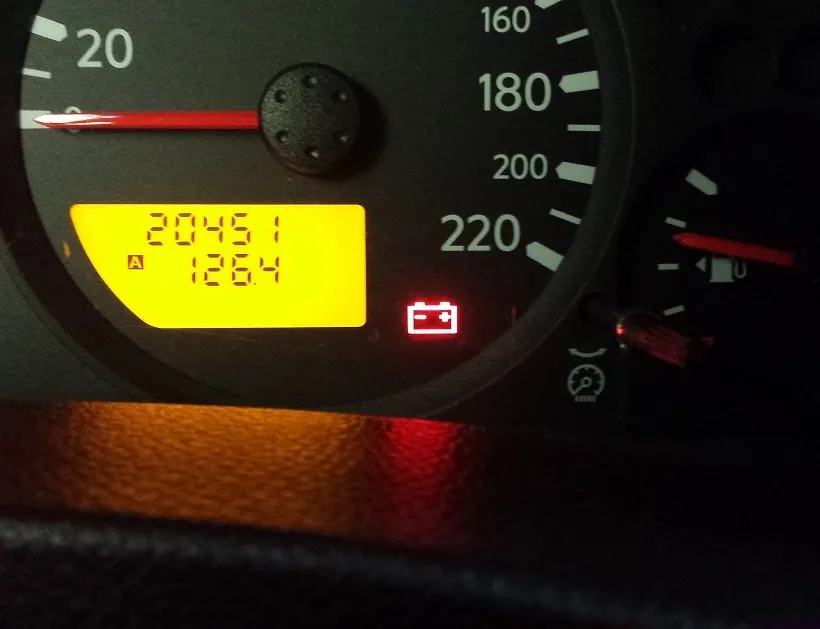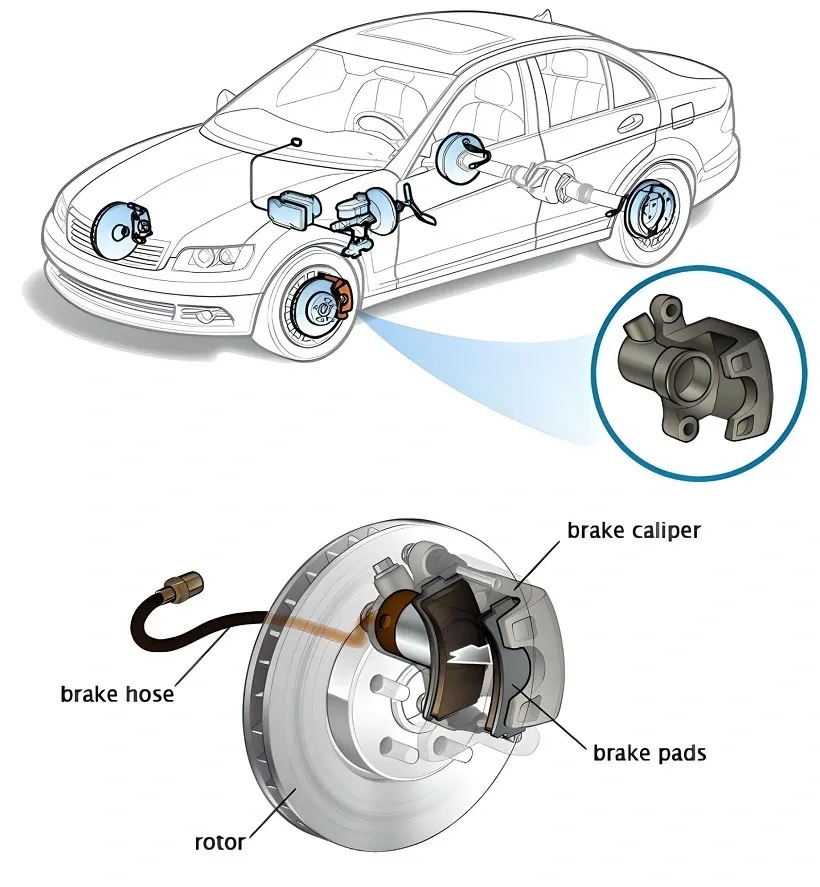When you're cruising down the road and suddenly notice that the battery light flickers while driving, it's natural to feel a sense of alarm. This warning light is an important indicator that something might be wrong with your vehicle's charging system. In this article, we’ll explore the common reasons why the battery light flickers while driving, the potential consequences of ignoring this issue, and practical steps to address it.
👉 What Does the Battery Light Mean?
The battery light on your dashboard is part of your vehicle’s onboard diagnostics system. When it illuminates or flickers, it's signaling that there's an issue with the electrical system. Typically, this involves the battery or the alternator. If the battery light flickers while driving, it usually indicates that your car's battery isn't being charged properly, which could lead to a breakdown if left unchecked.
👉 Common Reasons Why the Battery Light Flickers While Driving
There are several reasons why the battery light might flicker while you're driving. Understanding these causes can help you diagnose the problem more effectively.
1. Faulty Alternator. The alternator is a crucial component of your vehicle's electrical system. It charges the battery and powers the electrical systems while the engine is running. If the alternator is failing, it may not provide a consistent charge, causing the battery light to flicker while driving. A failing alternator can lead to a completely drained battery, leaving you stranded.
Symptoms of a Faulty Alternator:• Dim or flickering headlights
• Electrical accessories like the radio or power windows work intermittently
• Strange noises, such as whining or grinding, coming from the engine bay
• The smell of burning rubber or hot wires
2. Worn or Loose Alternator Belt. The alternator belt, sometimes referred to as the serpentine belt, drives the alternator from the engine's crankshaft. If this belt is worn, loose, or slipping, the alternator may not spin fast enough to generate the required power. This can cause the battery light to flicker while driving.
Symptoms of a Worn or Loose Alternator Belt:• Squealing noise from the engine, especially during acceleration
• Visible wear, cracks, or glazing on the belt
• Intermittent loss of power to electrical systems
3. Poor Battery Connections. Corroded or loose battery terminals can cause an inconsistent electrical connection. This poor connection might result in the battery not receiving a proper charge, which can cause the battery light to flicker while driving.
Symptoms of Poor Battery Connections:• Difficulty starting the vehicle
• Visible corrosion on the battery terminals
• Intermittent power loss to electrical components
4. Failing BatteryWhile the alternator is responsible for charging the battery, the battery itself could be the culprit if it’s nearing the end of its life. A failing battery might struggle to hold a charge, causing the battery light to flicker while driving.
Symptoms of a Failing Battery:• Slow engine crank when starting the car
• Battery age over three to five years
• Swollen or misshapen battery case
• The battery requires frequent jump-starts
5. Electrical System IssuesSometimes, the issue might not be with the alternator or the battery, but rather with the electrical system as a whole. Faulty wiring, blown fuses, or malfunctioning sensors can all lead to the battery light flickering while driving.
Symptoms of Electrical System Issues:• Intermittent electrical failures
• Burning smell from wiring
• Unusual behavior of electrical components (e.g., lights, gauges)
👉 Consequences of Ignoring a Flickering Battery Light
Ignoring a battery light that flickers while driving can have serious consequences. Here’s what might happen if the underlying issue isn’t addressed:
1. Complete Battery Drain. If the alternator isn't charging the battery properly, the battery will eventually drain completely. This will leave you stranded, as the engine will no longer start without a functioning battery.
2. Electrical System Failure. A flickering battery light is often a sign that your vehicle's electrical system is under stress. Continued driving without addressing the problem can lead to a complete electrical system failure, affecting everything from your headlights to your power steering.
3. Costly Repairs. What starts as a small issue, like a loose alternator belt, can quickly escalate into a more expensive repair if ignored. For example, a failing alternator can damage the battery and other electrical components, leading to higher repair costs.
👉 How to Fix a Flickering Battery Light
If you notice the battery light flickers while driving, it’s important to take immediate action to prevent a breakdown or further damage to your vehicle. Here’s what you should do:
1. Pull Over Safely. If the battery light is flickering, find a safe place to pull over and turn off the engine. Continuing to drive could lead to the battery dying completely, which would leave you stranded.
2. Check the Battery Connections. Open the hood and inspect the battery terminals for any signs of corrosion or loose connections. Clean any corrosion with a battery terminal cleaner or a mixture of baking soda and water. Tighten any loose connections with a wrench.
3. Inspect the Alternator Belt. Visually inspect the alternator belt for signs of wear, cracks, or looseness. If you notice any issues, it may be time to replace the belt. This is a relatively inexpensive and straightforward repair that can prevent further damage.
4. Test the Battery and Alternator. If you're comfortable doing so, you can use a multimeter to test the voltage of the alternator and battery. With the engine off, a healthy battery should read around 12.6 volts. With the engine running, the alternator should produce between 13.7 and 14.7 volts. If the readings are outside these ranges, you may need to replace the battery or alternator.
5. Seek Professional Help. If you're unable to diagnose or fix the problem yourself, it’s best to take your vehicle to a professional mechanic. They can perform a comprehensive diagnostic test to pinpoint the exact cause of the flickering battery light and recommend the appropriate repairs.
👉 Preventing Future Issues
To prevent the battery light from flickering while driving in the future, regular maintenance is key. Here are some tips:
• Regularly Inspect the Battery and Alternator. Check for signs of wear or damage and replace components as needed.
• Keep Battery Terminals Clean. Regularly clean the battery terminals to prevent corrosion and ensure a good connection.
• Replace Worn Belts. If you notice any signs of wear on the alternator belt, replace it promptly to avoid charging issues.
• Monitor Electrical Components. Keep an eye on the performance of your vehicle's electrical components and address any issues immediately.
💬 Final ThoughtsWhen the battery light flickers while driving, it’s a clear sign that something is amiss with your vehicle’s electrical system. By understanding the potential causes and taking prompt action, you can prevent more serious issues down the road. Whether it’s a simple fix like tightening a loose connection or a more complex repair like replacing the alternator, addressing the problem early can save you time, money, and frustration. If you're unsure about the cause, don’t hesitate to seek professional assistance to keep your car running smoothly.
Want more videos all about auto?
Subscribe to our YouTube channel 👉Cartech Home






















